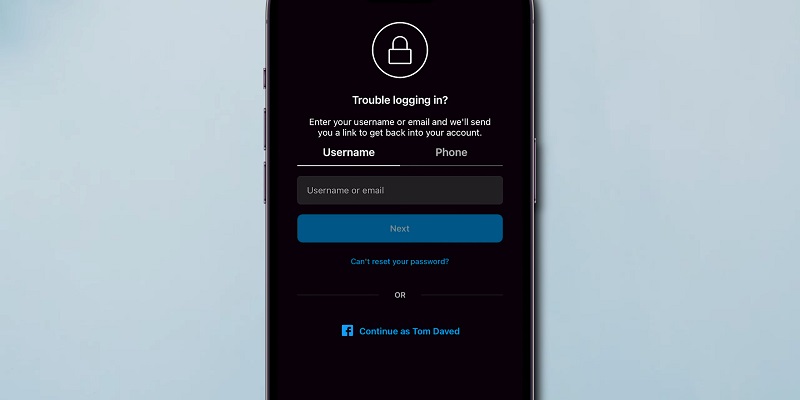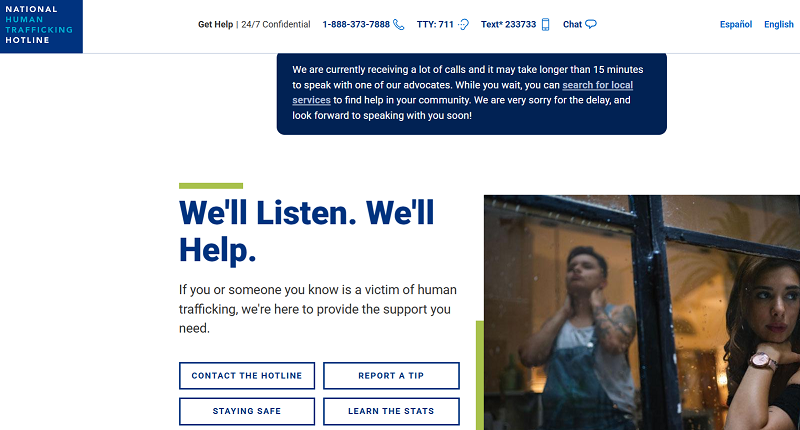Human traffickers use social media to find, contact, and trap victims with speed and precision. Fake job offers, false romance, and grooming tactics spread across platforms like Instagram, Facebook, TikTok, and dating apps. Each message aims to isolate, control, and exploit.
Victims include teens, migrants, and vulnerable adults. Traffickers build trust first, then use threats, blackmail, or violence. Real cases prove how fast manipulation turns into abuse.
Every tactic, every platform, every story reveals patterns that need exposure. Understanding those patterns stops the next trap.
How Human Traffickers Use Social Media to Target Victims
Social media gives human traffickers powerful reach with little risk. Every message, every comment, and every private chat opens a path to control. Nothing begins with violence. It begins with false kindness, attention, and opportunity.
Victims believe they are safe. The manipulation is already working before they notice anything wrong.

False Job Offers That Lead to Abuse
Online ads promote modeling, domestic work, or travel jobs with fake credentials and stolen photos. Victims think they are securing a better future. Instead, they are being groomed. Flights are booked. Phones are taken. Once relocated, they find themselves trapped with no support, no contact, and no way home.
Online Love That Turns Into Control
Many abusers act like romantic partners. They flood inboxes with flattery and promises. They say all the right things. Teenagers and emotionally isolated adults fall fast. Soon, they are pressured to share photos or personal secrets. Those materials become threats. Fear replaces trust.
Emotional Dependency Masquerading as Support
Some pose as friends or mentors. They respond with sympathy and understanding. Victims slowly cut ties with family and real friends. Loyalty shifts to the one person who “gets it.” That emotional bond gives complete control to the abuser.
Why Human Traffickers Choose Social Platforms
Social media gives instant access. No travel. No face-to-face contact. No risk. Fake names, fake jobs, fake images. Each failed attempt is replaced with another. Predators can message dozens in a single day. There is no filter strong enough to catch them all.
Spot the Pattern Before It Escalates
- Quick job offers with high rewards
- Sudden romantic attention that grows too intense
- Requests for secrecy or personal content
- Profiles with flawless images and no proof of reality
- Conversations that pull victims away from real-life connections
Platforms Human Traffickers Use Most Often
Every major platform with messaging features becomes a tool in the hands of human traffickers. They do not limit themselves to one app.
They move between platforms, test different methods, and target based on age, location, or interests. The more casual the app feels, the easier it becomes to hide predatory behavior.

Instagram and Facebook
Both platforms offer visuals and privacy tools that help lure and trap. Recruiters build fake business pages with job openings, lifestyle photos, and direct contact options. In private messages, they begin grooming. Hashtags tied to travel, modeling, or depression become search points. Victims often interact first, unaware of the trap.
Stories and disappearing messages on Instagram remove evidence quickly. Facebook groups and friend suggestions create access to shared interests, making the connection feel normal. Once trust forms, offers or demands begin.
Snapchat and TikTok
Snapchat’s disappearing messages and location features help abusers track and isolate targets. Teenagers form the largest user group, which makes it ideal for grooming. A victim may think they are chatting with someone their age. Behind the profile is a fake identity built to deceive.
TikTok uses videos, trends, and comments to connect. Predators study what someone posts. They then craft comments that seem supportive or flirtatious. Direct messages follow. What starts as attention turns into manipulation, especially when a user already shows signs of loneliness or low self-esteem.
Dating Apps
Apps like Tinder, Bumble, and Hinge give direct access to those looking for connection. Criminals posing as charming partners build fast intimacy. They suggest moving conversations off the app.
Then come travel invitations, financial offers, or requests for photos. Once the victim shares anything personal, control begins.
Two Reasons Human Traffickers Prefer These Platforms
- Each platform has features that remove or hide conversations
- None require real-time identity checks or consistent verification
Signs of Grooming and Psychological Control
Grooming starts with attention that feels safe. Traffickers use soft words, sympathy, and compliments to create a bond. The victim begins to trust, respond, and eventually depend on that connection.
Control never starts with aggression. It begins with understanding, shared pain, and constant communication. Once that bond locks in, the shift toward control feels natural to the victim.
1. Establishing Contact
The first message may feel harmless. It could be a compliment, a job inquiry, or shared interests. The goal is not to scare—it is to start. Victims who respond open the door. Then the conversations grow longer. Details are shared. A fake relationship begins to form.
2. Building Trust and Emotional Dependency
The contact becomes daily. The trafficker listens, remembers things, and supports every decision. Victims start to share secrets. They feel understood. Over time, the abuser becomes their main source of comfort. Real friends fade. Family gets ignored. Isolation begins inside the mind, not outside the home.
3. Introducing Requests and Pressure
Once dependency is formed, requests follow. It starts with small favors or harmless tasks. Then come the photos, videos, or travel suggestions. Victims comply because they trust. They believe it proves love or loyalty. Refusal brings guilt or threats. Some hear, “If you loved me, you would,” or “No one else understands you like I do.”
4. Using Fear to Maintain Control
When victims pull back, everything changes. Threats replace kindness. Shared photos become tools for blackmail. The trafficker says, “Everyone will see what you sent,” or “Your family will be ashamed.” Panic replaces comfort. At this stage, victims often feel trapped without realizing they were groomed.
Kat Torres – Instagram Influencer Turned Exploiter
Kat Torres built a massive following online as a spiritual mentor and former beauty queen. Her image reflected success, glamour, and inner peace. Women followed her for advice, healing, and lifestyle guidance.
Many believed she offered a path to growth. In reality, she used that trust to trap and exploit.
What She Promised
Torres created posts and stories about empowerment and transformation. She invited followers into private groups, spiritual retreats, and personal coaching sessions.
Some were told they would earn money through brand work or healing services. Once isolated, the control began.
How She Operated
Victims entered her inner circle and moved into her homes in Europe and Brazil. Their communication with outsiders ended. She took their income, controlled their behavior, and enforced silence.
Anyone who resisted faced verbal abuse and threats tied to spiritual failure or divine punishment.
Legal Outcome
Torres was arrested and convicted of human trafficking and holding women in conditions of slavery. Her use of Instagram and private messaging tools made it easier to lure victims without raising suspicion. The case exposed how influencers can mask control behind spiritual branding.
Kristen – Teen Groomed on Instagram, Still Missing
Kristen was 15 years old when she connected with someone on Instagram who appeared kind, supportive, and understanding. At home, she felt isolated. Online, she found someone who seemed to care. Within weeks, she left home without telling anyone. Her life changed forever.

The Timeline
Kristen first disappeared in 2022. She returned briefly, shaken and traumatized. Her family tried to intervene, but the Instagram contact remained active. She vanished again soon after.
Law enforcement traced accounts but made little progress. The profile that groomed her had already vanished.
Grooming Through Private Messaging
The man who lured her used compliments, emotional sympathy, and promises of escape. He studied what she posted, commented strategically, and waited for responses. Their conversation became constant.
The bond grew faster than her family realized. By the time anyone raised concern, she had already left.
The Fight Her Family Faces
Kristen’s mother now works with advocacy groups to raise awareness about digital grooming. She blames Instagram’s weak moderation and failure to respond quickly. The case remains open. Her daughter’s last trace came from another city, possibly another state. Each delay by the platform widened the gap between discovery and recovery.
Herman Brightman – Romance Scam that Led to Assault
Herman Brightman used dating apps and Facebook to pose as a nurse and emotional caregiver. His targets were women looking for love or support after trauma. His profiles were carefully curated.
He used stolen photos, shared emotional stories, and acted like someone who wanted connection. Behind the screen, he planned abuse.
Building False Trust
He sent messages filled with sympathy. He remembered birthdays, asked about mental health, and encouraged healing. That care created loyalty. Victims believed they had found a gentle partner. Many met him in person, convinced by months of steady communication.
Violence Hidden Behind Kindness
What started as a love story turned violent. Brightman assaulted multiple women. Some reported threats, coercion, and physical abuse. Each woman described a turning point when his tone changed completely. The same man who offered healing now demanded silence.
Legal Outcome and Impact
He received a ten-year prison sentence. Court documents revealed that multiple women fell victim across different platforms. Each case started the same way—with a false online profile, emotional connection, and eventual control. Brightman’s method showed how digital grooming can escalate into real-world violence before anyone notices the pattern.
Challenges Facing Law Enforcement and Victim Families
Fighting trafficking through social media exposes serious weaknesses in current legal and digital systems. Police departments, prosecutors, and family members all face a wall of technical barriers.
Online platforms move faster than legal paperwork. Traffickers exploit those delays.
Jurisdiction and Platform Resistance
Crimes that begin online often cross state or national borders. A message may be sent in one country, read in another, and acted upon somewhere else.
Law enforcement agencies must navigate conflicting laws, limited cooperation, and bureaucratic delays. Social media companies often respond slowly to emergency requests. Some do not respond at all.
Most platforms only release user data after official subpoenas or international requests. That process can take weeks. By then, predators delete accounts and erase conversations.
Victims vanish into silence. Families are left watching profiles that once looked normal turn into ghost accounts with no trace.
Evidence That Disappears Before Arrest
Snapchat messages vanish by design. Instagram and Facebook allow disappearing content. Many dating apps offer encrypted chats. When victims come forward, messages are gone. Courts require evidence. Survivors often cannot provide it. That gap creates doubt, and doubt delays action.
Families Fighting Alone
Parents who report grooming or suspicious messages are often dismissed. Some are told to wait. Others are told there’s nothing to investigate unless a crime has already occurred. By the time agencies act, the child is already gone. Many families lead searches on their own, contact media outlets, or rely on advocacy groups.
Holding Platforms Accountable
Social media platforms hold the power to slow digital trafficking, yet most act too late. Policies exist. Reporting buttons exist. But systems remain easy to avoid and hard to trust. Every platform human traffickers use has one thing in common—weak gatekeeping.

No Real Identity Verification
Most apps require only an email or phone number to register. There are no identity checks, no real-time monitoring, and no consistent system to block repeat offenders. Once an account gets banned, another appears in minutes. The cycle repeats without challenge.
Poor Response to Reports
Users who report grooming or trafficking behavior rarely receive follow-up. Some reports take days to review. Some are closed automatically. In cases involving minors, parents say they had to submit dozens of forms before receiving any human response. In emergencies, silence kills.
Lack of Parental Controls
Apps popular with teens lack meaningful safety controls. There are few alerts for dangerous conversations. Privacy settings often default to “open.” Human traffickers know how to search hashtags, join groups, and mimic interests. The platform gives them access, and the system keeps it open.
Pressure That Creates Real Change
- Meta now faces lawsuits tied to failure in protecting minors
- Lawmakers demand stricter age verification and AI monitoring
- Survivor-led groups push for transparency and real-time alerts
How to Recognize and Stop Online Trafficking
Stopping online trafficking begins with knowing what to look for. Predators repeat patterns. They test limits. They watch for reaction. Once you know the signs, you can interrupt the process early, stop further contact, and report it with clarity.
Key Signs to Watch
- A stranger sends compliments or job offers without context
- Someone pushes for private chat instead of public comments
- Sudden romantic attention after only a few interactions
- Requests for photos, money, or travel
- Conversations that grow possessive, controlling, or guilt-driven
What to Do Immediately

- Stop responding. Silence removes power.
- Screenshot all messages before they vanish.
- Block the user and report their profile directly.
- Share concerns with a trusted adult, school official, or police.
- Use cyber tip hotlines like the National Human Trafficking Hotline (1-888-373-7888) or CyberTipline.org
Last Words
Human trafficking begins with a message, not a van. A friendly tone, a fake offer, or a private compliment opens the door. Victims respond because the attention feels safe. That moment becomes the first step toward control. Everything that follows depends on silence, trust, and fear.
Social media creates direct access. No background checks. No real oversight. Features meant for privacy give predators a shield. Profiles appear polished. Offers appear professional. Messages feel sincere. By the time victims recognize the danger, damage has already begun.
Legal systems move slowly. Platforms delay action. Families report abuse and receive automated replies. Investigations stall without screenshots or visible threats. Victims carry the burden of proof, even when evidence has already vanished. Every obstacle favors the one who caused the harm.
The defense begins earlier. Schools can teach the patterns. Parents can stay involved in online behavior without using shame. Peers can ask hard questions without blaming the victim. Communities can learn what manipulation sounds like, and speak up before someone disappears.

